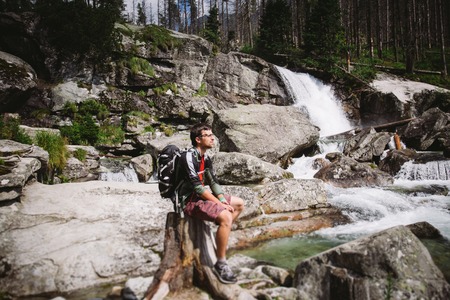1. Introduction: Why Dynamic Stretching Matters for Hikers
Before you lace up your boots and hit the trail, there’s one important step every hiker should take—dynamic stretching. Unlike static stretching, which is all about holding a pose, dynamic stretching involves moving your body through a full range of motion. This type of stretching is especially helpful for hikers because it gets your muscles warm and ready for action.
Why does this matter? Hiking isn’t just a casual stroll in the park—it can mean steep climbs, uneven terrain, and carrying a heavy pack. If your muscles are tight or not properly warmed up, you’re more likely to get hurt or feel stiff before you’ve even reached your first viewpoint. Dynamic stretches prepare your body by increasing blood flow, boosting flexibility, and activating key muscle groups used in hiking.
Benefits of Dynamic Stretching for Hikers
| Benefit | How It Helps on the Trail |
|---|---|
| Increased Flexibility | Makes it easier to navigate rocky steps and big roots without straining muscles |
| Injury Prevention | Lowers risk of common hiking injuries like rolled ankles, pulled muscles, or knee pain |
| Improved Performance | Keeps you feeling strong and energetic so you can hike longer with less fatigue |
What Makes Hiking Different?
The trails in America—from the rugged Rockies to the misty Smokies—offer unique challenges that test your balance, strength, and stamina. Dynamic stretching wakes up the hips, knees, ankles, and back—areas that take the brunt of every hike. By making this a habit before every adventure, you’ll notice you start stronger and recover faster.
2. Warming Up: Getting Your Muscles Trail-Ready
Before you dive into dynamic stretches, it’s important to get your body moving and raise your core temperature. Think of this as telling your muscles, “Hey, we’re about to hike!” Warming up with simple, full-body movements helps increase blood flow and loosens up stiff joints so you can stretch more effectively and help prevent injuries on the trail.
Why Warm Up Before Hiking?
Jumping straight into a hike or even stretching cold muscles isn’t the best idea. Warming up preps your body for movement and makes targeted stretching safer and more effective. Plus, it just feels good to shake off the cobwebs before you hit the trail.
Easy Full-Body Warm-Up Moves
You don’t need fancy equipment or a gym for a solid warm-up. Here are some super simple moves that get the job done:
| Warm-Up Move | How To Do It | Duration/Count |
|---|---|---|
| March in Place | Lifting knees high, swing your arms as if you’re power walking in place. | 1-2 minutes |
| Arm Circles | Extend arms out to sides and make small circles, gradually increasing to larger circles. | 30 seconds forward, 30 seconds backward |
| Torso Twists | Stand tall with feet hip-width apart, gently twist from side to side letting your arms swing freely. | 20 twists (10 each side) |
| Ankle Rolls | Lifting one foot off the ground, roll your ankle clockwise then counterclockwise before switching feet. | 10 rolls each direction per ankle |
| Walking Lunges | Step forward into a lunge, push back up, then repeat with the other leg as you walk forward. | 10 lunges per leg |
Tips for a Great Warm-Up Routine
- You want to break a light sweat but not feel tired after warming up.
- Breathe deeply and move at a comfortable pace—don’t rush it.
- If you’re hiking with friends, get everyone involved! It’s a great way to kick off the adventure together.
This quick routine gets your whole body ready for those dynamic stretches that come next. Your muscles will thank you once you hit the trail!
![]()
3. Key Lower Body Dynamic Stretches
Before you set foot on the trail, warming up your lower body is crucial for a safe and enjoyable hike. Dynamic stretches help activate your muscles, improve flexibility, and get your blood flowing—especially important when tackling steep inclines or descents. Here are some essential dynamic stretches that target the major muscle groups you’ll use most: quads, hamstrings, calves, and hip flexors.
Why Focus on Lower Body Stretches?
Your legs do most of the work while hiking. Whether youre powering uphill or carefully stepping downhill, strong and flexible leg muscles can help prevent injuries and keep you comfortable for miles. Let’s break down the best dynamic stretches for hikers:
Dynamic Stretches for Hikers
| Muscle Group | Stretch Name | How-To | Tips |
|---|---|---|---|
| Quads | Walking Quad Stretch | Take a step forward, grab your back ankle with your hand, pull heel toward glutes, then switch legs as you walk. | Keep your chest up and knees close together for balance. |
| Hamstrings | Leg Swings (Front to Back) | Hold onto a sturdy surface; swing one leg forward and backward in a controlled motion. Switch legs after 10-15 swings. | Start slow and gradually increase range of motion. |
| Calves | Toe Walks | Rise onto your toes and walk forward for about 20 steps, feeling the stretch in your calves. | Keep your core engaged to stay balanced. |
| Hip Flexors | Lunge with Twist | Step into a lunge, then twist your torso toward your front knee. Return to standing and repeat on the other side. | Don’t let your front knee go past your toes. |
Extra Tips for Hikers
- Pace yourself: Spend about 5-7 minutes total on these moves before hitting the trail.
- Breathe deeply: This helps relax your muscles and makes each stretch more effective.
- No bouncing: Keep all movements smooth and controlled to avoid strains.
- Add arm swings or torso twists: For a full-body warm-up if you’re carrying a backpack.
A few minutes spent stretching can make all the difference when you’re out exploring America’s wild places! Your legs will thank you mile after mile.
4. Upper Body and Core Activation
When prepping for a hike, it’s easy to focus only on your legs, but giving some love to your upper body and core is just as important. These areas help you keep your balance on uneven ground and make carrying a backpack way easier. Dynamic stretches that wake up your shoulders, upper back, and abs are key for a successful day on the trail.
Why Activate Your Upper Body and Core?
Your core muscles keep you steady when you’re stepping over rocks or roots. Strong, flexible shoulders and upper back muscles prevent fatigue from carrying your pack. A few minutes of dynamic stretching can make all the difference in how you feel during and after your hike.
Essential Dynamic Stretches for Hikers
| Stretch | How To Do It | Benefits |
|---|---|---|
| Arm Circles | Stand tall, extend arms out to your sides, make small circles forward for 15 seconds, then backward for 15 seconds. | Warms up shoulders, increases range of motion. |
| Torso Twists | Stand with feet hip-width apart, arms out at shoulder height. Twist gently left and right, letting your hips move naturally. Repeat for 30 seconds. | Activates core muscles, improves spinal mobility. |
| Standing Side Reaches | Reach one arm overhead while leaning gently to the opposite side. Alternate sides for 30 seconds. | Stretches obliques and lats, helps with balance. |
| Shoulder Rolls | Roll both shoulders forward in a circular motion for 10 reps, then roll backward for another 10 reps. | Loosens upper back and shoulder muscles. |
| Knee-to-Elbow Marches | March in place, bringing each knee up toward the opposite elbow, twisting your torso slightly as you go. Continue for 30 seconds. | Engages core and warms up hip flexors. |
Pro Tip: Don’t Rush It!
Take your time with these stretches—quality over speed is what matters. Aim to feel a gentle activation without pushing into pain. By including these moves in your warm-up routine, you’ll be ready to tackle the trail with better posture, balance, and energy.
5. Putting It All Together: A Pre-Hike Stretching Routine
Ready to hit the trail feeling loose and energized? Here’s a simple pre-hike stretching routine using the dynamic moves we’ve covered, tailored for American hikers who want to make stretching part of their outdoor adventure ritual. This warm-up should take about 8-10 minutes and can be done right at the trailhead or in your driveway before you leave. No fancy gear required—just a bit of space and your hiking spirit!
Sample Pre-Hike Dynamic Stretching Routine
| Stretch | How To Do It | Reps/Time |
|---|---|---|
| Leg Swings (Front to Back) | Swing one leg forward and backward, keeping your core stable. Hold onto a tree or car for balance if needed. | 15 swings per leg |
| Walking Lunges with Rotation | Lunge forward, then twist your torso toward your front knee. Alternate legs as you walk. | 10 lunges per leg |
| Knee Hugs | Pull one knee up toward your chest, hold briefly, then switch to the other leg as you walk or stand in place. | 10 hugs per leg |
| Ankle Circles | Lift one foot off the ground and gently rotate your ankle in circles. Switch direction halfway through. | 10 circles each direction per ankle |
| Hip Circles | Place hands on hips and make large circles with your hips, loosening up your lower back and glutes. | 10 circles each direction |
| Arm Circles (Forward & Backward) | Extend arms out to the sides and make big circles, first forward, then backward. | 15 seconds each direction |
| Torso Twists | Stand tall with feet shoulder-width apart. Rotate your upper body side to side, letting your arms swing freely. | 20 twists total |
Tips for Making Pre-Hike Stretching a Habit
1. Pair It With Your Gear-Up Routine
Toss stretching into your checklist alongside lacing up boots, filling water bottles, and grabbing snacks. Make it just as automatic as putting on sunscreen or bug spray.
2. Buddy Up For Accountability
If you hike with friends or family, lead a quick group stretch before heading out. It’s a great way to get everyone focused and excited for the trek ahead—plus, nobody wants to be the one holding up the group!
3. Keep It Short and Sweet
You don’t need a long yoga session—these stretches are designed to be fast and effective so you can spend more time enjoying nature.
4. Use Landmarks As Reminders
If you tend to forget, do your routine every time you reach the trailhead sign or just after parking at the lot. Linking stretching with a specific spot makes it easier to remember.
Your Trail-Ready Mindset Starts Here!
A few minutes of dynamic stretching helps prevent injuries, wakes up sleepy muscles, and gets you mentally ready for adventure. Make it part of your American hiking tradition—you’ll feel the difference from mile one!


